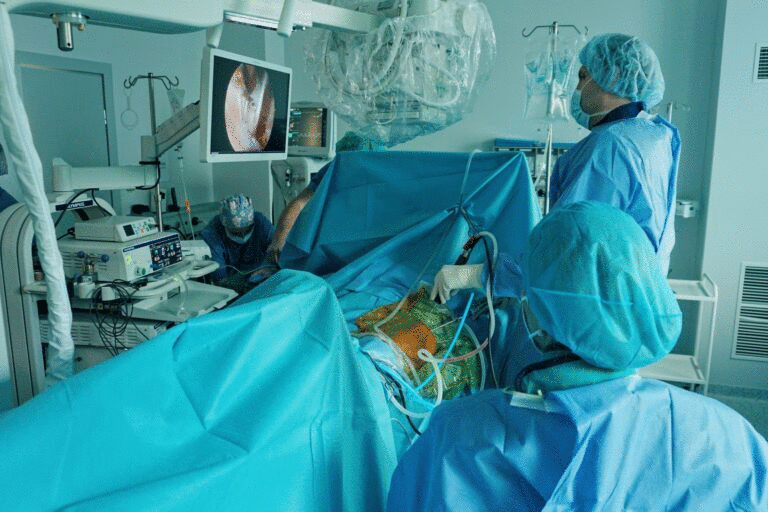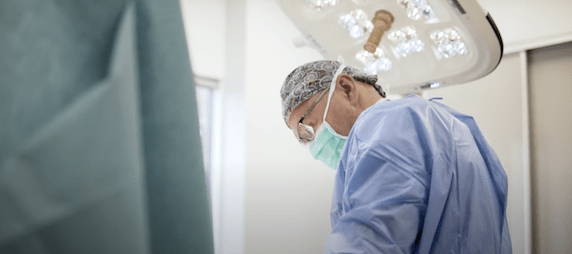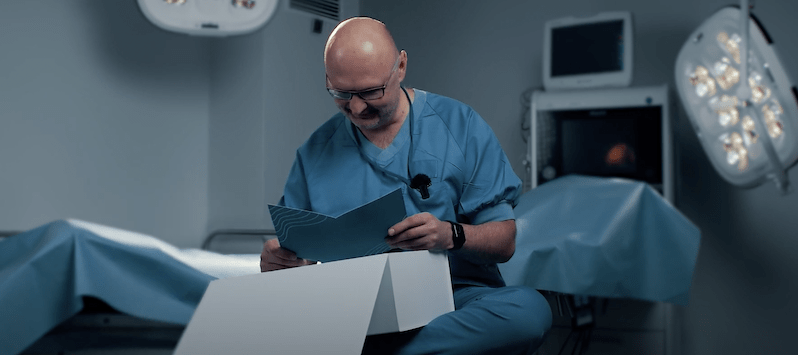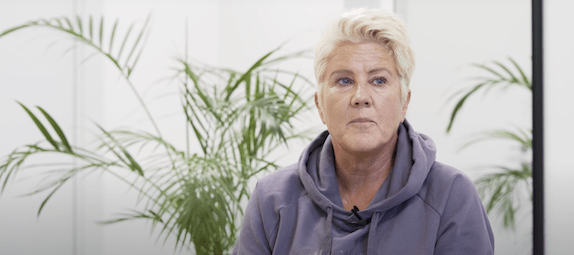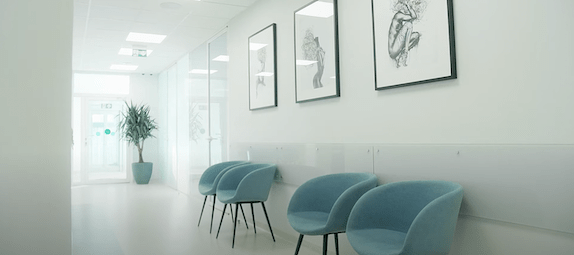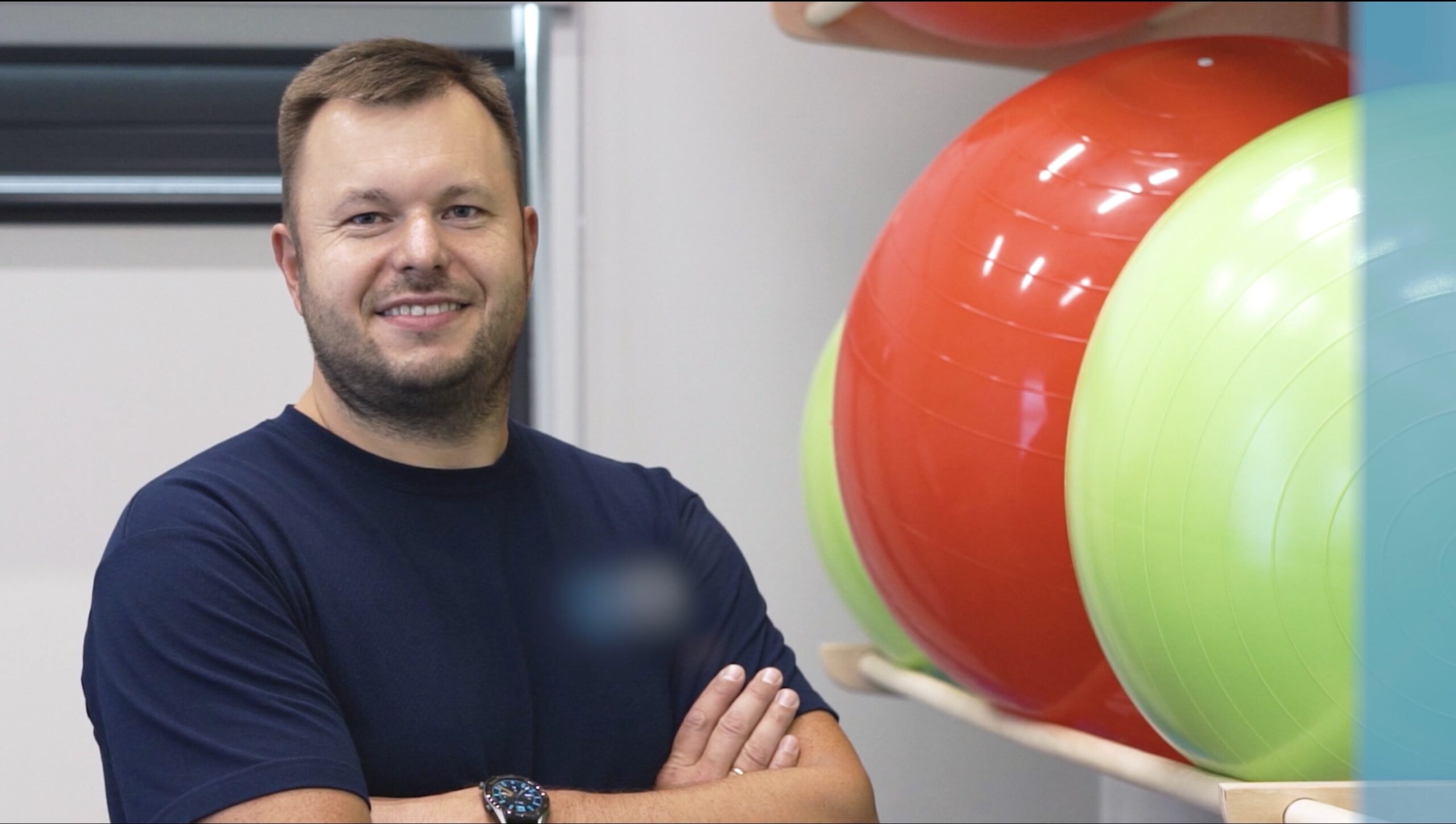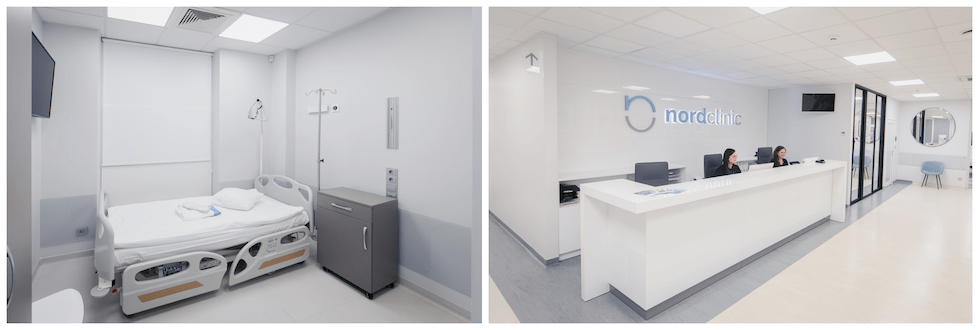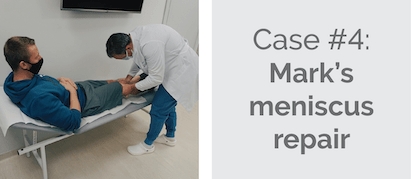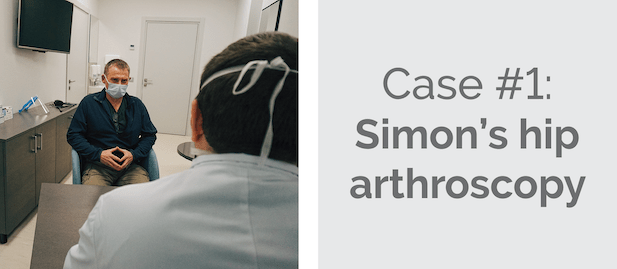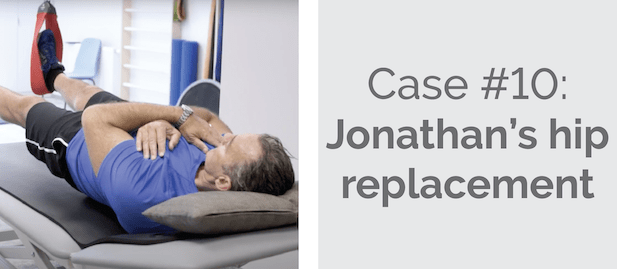Hip Impingement
We are one of the leading orthopaedic surgery clinics for medical tourists in the European Union. We are proud of the fact that over 90 % of our patients come from the UK, Ireland, Norway, Sweden, the United States, Canada and other countries.
Reviews & Facebook group
Our patients and clinic in the media
Prices
- hip impingement – from 2.920 £ | or from 1.800 £ with S2 funding*
- hip arthroscopy – from 2.250 £
- hip labral tear – from 2300 £
- MRI performed in 1 day – 155 £
*Your surgery can be partly funded via the S2 funding route (read more in the next tab)
- accommodation with medical care – from 62 £ per night
The S2 route may entitle you to NHS funding for planned state healthcare treatment in Lithuania. You can save up to 40% for the hip impingement surgery. Contact our customer service for more information:
- Hip impingement
- 2.920 £ without S2 funding
- 1.800 £ with S2 funding
- consultation with the surgeon
- necessary health tests
- surgery
- implant
- anaesthesia
- hospitalisation
- 24/7 personal assistance during your stay
- transfers to / from the airport, hotel and clinic
- all documents translated to English
Get your surgery for free by claiming a refund from your local health board. The clinic helps patients with the documents needed to claim a refund after following the EU directive route for medical treatment abroad. It applies to patients who are insured under the systems of one of the EU countries and may not get the surgery due to long waiting times.
- hip impingement – from 3.500 € | or from 2.150 € with S2 funding*
- hip arthroscopy – from 2.500 €
- hip labral tear – from 2700 €
- MRI performed in 1 day – 220 €
*Your surgery can be partly funded via the S2 funding route (read more in the next tab)
- accommodation with medical care – from 74 € per night
The S2 route may entitle you to NHS funding for planned state healthcare treatment in Lithuania. You can save up to 40% for the hip impingement surgery. Contact our customer service for more information:
- Hip impingement
- 3.500 € without S2 funding
- 2.150 € with S2 funding
- consultation with the surgeon
- necessary health tests
- surgery
- implant
- anaesthesia
- hospitalisation
- 24/7 personal assistance during your stay
- transfers to / from the airport, hotel and clinic
- all documents translated in English
Get your surgery for free by claiming a refund from your local health board. The clinic helps patients with the documents needed to claim a refund after following the EU directive route for medical treatment abroad. It applies to patients who are insured under the systems of one of the EU countries and may not get the surgery due to long waiting times.
Hip arthroscopy case analysis
Patient stories
Clinic videos
Only we can offer:
One of the most experienced orthopaedic surgeons in Europe. More than 3.500 joint replacement surgeries were performed by our surgeon to this date – a figure that no other surgeon or clinic in the region can match.
More than 150 scientific articles co-authored by our surgeon and over 50 publications in different medical journals. You can read the most recent one here.
More than 188 positive reviews from our happy clients from all over the world. Accept the challenge and read them all here!
Nordorthopaedics Center Of Excellence

Our surgeon Valdemar Loiba
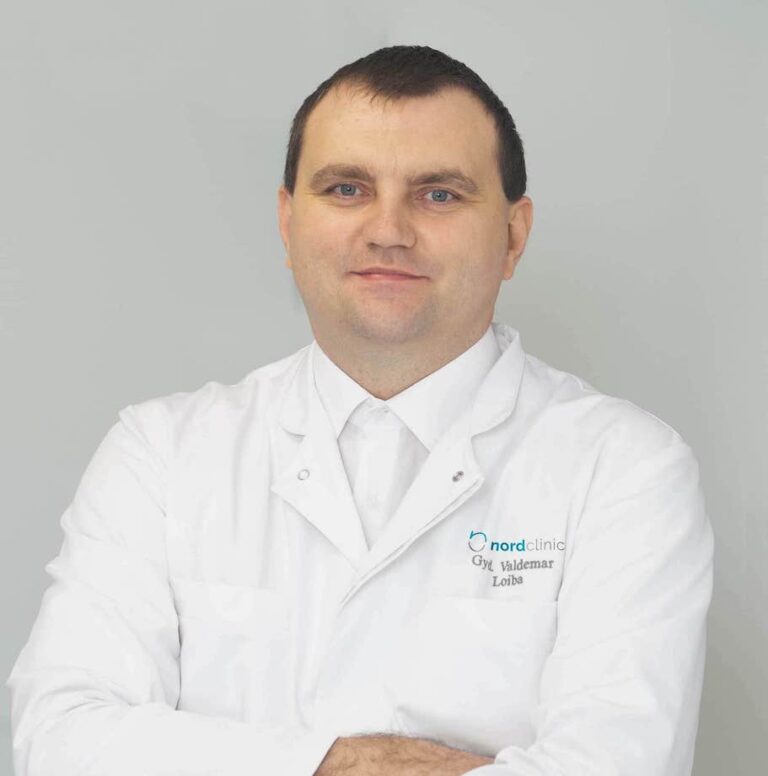
- More than 15 years of working experience
- Performs 300+ arthroscopies a year
- Fluent in English
- Co-author of scientific articles represented in various medical journal
- Author of 6 international oral presentations
- Read more
Refund for EU patients
Get your surgery for free by claiming a refund from your local health board. The clinic helps patients with the documents needed to claim a refund after following the EU directive route for medical treatment abroad. It applies to patients who are insured under the systems of one of the EU countries and may not get the surgery due to long waiting times. On average our patients from the EU countries get fully refunded by their local health board in 5 months after their surgeries.
Rehabilitation packages
One of the most important factors for a quick and full recovery after surgery is proper rehabilitation. Rehabilitation helps recover after surgery as well as prevents formation of blood clots and helps avoid most of the postoperative complications and side effects. We offer two different rehabilitation packages:
Outpatient rehabilitation in Kaunas with a physiotherapist. The rehabilitation clinic is equipped with modern facilities. Individual rehabilitation programs are prepared by a kinesiologist with over 20 years of experience, Prof. Laimonas Siupsinskas. This type of rehabilitation is best suited for people who are physically active, athletes and those wishing to return to sports as soon as possible.
Rehabilitation in Kaunas – € 120 / £ 100 for one 1 h physiotherapy session per day.
- personalized rehabilitation course;
- specialist who is also a physiotherapist for Lithuanian Men’s National Basketball Team;
- all required medication;
- transportation to/from the rehabilitation clinic;
- read more about outpatient rehabilitation in Kaunas.
Inpatient rehabilitation at SPA resort in Druskininkai. It is equipped with modern facilities. The professionals there have years of experience working with people after various surgeries and injuries.
Rehabilitation at SPA resort in Druskininkai – from € 220 / £ 183 per day
- personalized rehabilitation course;
- room with TV and private bathroom;
- three meals a day;
- all medication needed;
- transportation to/from the rehabilitation centre;
- read more about inpatient rehabilitation in Druskininkai.
Our clinic
Self-catered accommodation with medical care
11 reasons that make us the most popular orthopaedic clinic abroad
One of the most important factors for a quick and full recovery after surgery is proper rehabilitation. Usually, clinics are not able to offer this due to costs savings. Our patients can choose between two inpatient and outpatient options: rehabilitation with a physiotherapist of the Lithuanian national basketball team, prof. L. Siupsinskas or rehabilitation at a medical SPA.
Our team of 5 orthopaedic surgeons has 10-20 years of experience in the field in total performing over 1.000 different orthopaedic surgeries per year. Moreover, our surgeons are members of various prestigious surgical societies both Lithuanian and international. Our leading joint replacement surgeon S. Tarasevicius is an author of 150 scientific publications in different medical journals, who has performed more than 3.500 joint replacement surgeries during 15+ years of his professional experience.
We are one of the leading orthopaedic surgery clinics for medical tourists in the European Union. We are proud of the fact that over 90 % of our patients come from the UK, Ireland, Norway, Sweden, the United States, Canada and other countries.
One of the world’s leading medical technology companies and orthopaedic implant manufacturers, Smith & Nephew, have chosen Nordorthopaedics as Center of Excellence in the Baltic States.
We are trusted by our patients and we appreciate all the reviews and feedback collected over the years. Find more than 150 testimonials here or on Google.
Already more than 4.000 of our former, current and future patients joined our online community with the aim to build a space for opinions and mutual support. Members are welcome to share experiences about their visit to the clinic and to discuss all surgery-related matters. No other orthopaedic clinic can offer such group support.
Being a true member of the International Society of Arthroplasty Registries, Lithuania is one of the leaders in low joint replacement revision rates, as only 9% of surgeries in Lithuania require revision in 10 years after surgery. Moreover, with the implants used at our clinic, only 2-3% of surgeries require revision in 10 years after surgery, while revision rates in some other Western countries, for example, USA, is as high as 17% in 10 years after surgery. The implants used at our clinic have been evaluated by other countries’ registries as those ensuring longest implant life, as compared to products of other manufacturers. Moreover, thanks to our active participation in collecting data for the registries, the surgical technique used at our clinic ensures best surgical outcomes.
Our clinic is seen on different media mentions like: BBC News, BBC Radio, The Telegraph, MailOnline, Winnipeg Free Press, CTV News, CBC, RTE Radio, itv.
Our clinic works according to the highest standards set by the European Union. This helps to guarantee the quality of medical services. We care about the safety, comfort and successful results of our patients from all over the world.
The clinic helps patients with the documents needed to claim a refund after following the EU directive route for medical treatment abroad. It applies to patients who are insured under the systems of one of the EU countries and may not get the surgery due to long waiting times.
We provide customer service in 9 foreign languages including English, Swedish, Norwegian, Danish, Italian, Spanish, French, Russian, Polish. Everyone in our clinic speaks English, including nurses, assistants and the surgeon.
Athletes treated at Nordorthopaedics
Official clinic of Lithuania national football teams

Highest quality implants
Our clinic uses implants based on their performance in international registries.
Being a true member of the International Society of Arthroplasty Registries, Lithuania is one of the leaders in low joint replacement revision rates, as only 9% of surgeries in Lithuania require revision in 10 years after surgery. Moreover, with the implants used at our clinic, only 2-3% of surgeries require revision in 10 years after surgery, while revision rates in some other Western countries, for example, USA, is as high as 17% in 10 years after surgery. The implants used at our clinic have been evaluated by other countries’ registries as those ensuring longest implant life, as compared to products of other manufacturers. Read more here.
13 patients' case studies
Direct flights to Lithuania





What is hip impingement? What are its symptoms and causes?
Hip impingement, also called femoroacetabular impingement, is a structural disorder of the hip. In a healthy joint, the ball of the femur fits perfectly into the acetabulum and glides smoothly during hip movements. However, in hip impingement, bone spurs or a structural joint abnormality prevent the painless and free movement of the ball-and-socket joint.
Patients report feeling pain in the groin after sitting, walking, flexing, or rotating the hip. The symptoms also include altered walking and hip stiffness. Over time, hip impingement can cause joint cartilage injury, strain on other parts of the body, and an increased risk of osteoarthritis.
There are generally two types of hip impingement:
- In the pincer hip impingement the main cause is a malformation of the hip socket. The movements are restricted because the joint socket is too deep and the end of the femur bone hits the front of the acetabulum.
- The cam hip impingement is characterized by bone overgrowth (bone spurs). A loss of roundness to the femoral head results in poor contact between the femur head and the hip socket.
Who is at risk for hip impingement?
There are several risk factors that increase the likelihood of developing hip impingement. In general, the risk factors include childhood orthopedic conditions (e.g. hip dysplasia), heavy labour, trauma to the hip, repetitive flexion, inflammatory arthritis, muscle imbalance, poor biomechanics, instability of the hip, obesity, male gender, and others.
How is hip impingement treated?
- There are many non-surgical hip impingement treatment options to consider. Immediate hip impingement management includes resting, anti-inflammatory medications, using ice packs, and avoiding high-intensity exercises that require repeated hip flexion, twisting, or squatting
- Physical therapy is also a good treatment option for hip impingement patients. An individualized exercise routine decreases stress on the hip joint and surrounding tissues.
- Patients can also get steroid injections to reduce inflammation and relieve pain.
- A referral for surgical hip impingement repair is recommended when conservative measures fail to provide relief in 4 to 6 weeks. Surgical correction of hip impingement removes the source of friction between the bones and prevents further damage, like osteoarthritis.
Who is a good candidate for hip impingement surgery?
A good hip impingement surgery candidate is someone who complains about pain in the groin during flexion, walking, sitting, or squatting. A candidate should have completed physical therapy sessions without any signs of improvement and be in generally good health. Hip impingement surgery cannot be performed for someone with active infectious processes, osteoarthritis, severe obesity, or osteoporotic bones (loss of bone density).
How is hip impingement surgery performed?
Hip impingement can be corrected arthroscopically or with open surgery. An arthroscopic approach is a more common option since it only requires a few small incisions to access and operate on the hip joint. Arthroscopy has many advantages, such as less tissue damage, less postoperative pain, and a faster recovery. Open surgery allows the surgeons to address a variety of hip pathologies with direct observation.
Pincer impingement, in which the acetabulum is too deep, is corrected with periacetabular osteotomy (Ganz osteotomy). It is a technically challenging surgery to reshape the hip joint for people with hip dysplasia. The surgery is performed under fluoroscopy to provide the surgeon with continuous x-ray guidance. It is an open surgery that takes 2-3 hours to complete and is performed under general anaesthesia. A surgeon makes an incision over the hip joint. Then he cuts the acetabulum from the pelvic bone and repositions it with screws to ensure a better fit for the ball-shaped femoral head. The procedure reduces pain, restores function, and prevents further deterioration.
Cam impingement, in which excess bone growth is the cause, can be corrected with femoral osteoplasty in which the femur is reshaped to fit into the hip socket. Femoral osteotomy can be performed with an arthroscopic or open surgery approach. After gaining access to the joint, a surgeon reshapes the head and neck of the femur and removes the bone spurs. The surgery relieves painful symptoms and reduces the risk of osteoarthritis.
Possible complications
Even though surgery for hip impingement is relatively safe, every surgical intervention comes with a certain level of risk. Complications can occur and may include wound infection, blood clots, nerve damage, and lack of healing of the involved bones. Every precaution is taken to ensure the highest quality care, safety, and the best surgical outcomes for the patient.
Recovery and rehabilitation after the surgery. Returning to sports and other activities
After surgery, patients remain in the hospital for 3 to 4 days. While in the clinic, pain is managed intravenously to ensure a comfortable recovery. Most patients can walk immediately after the surgery and crutches should be used for the first 6 weeks. After 2-3 days, X-rays are performed to evaluate the hip joint. A follow-up appointment to remove stitches is scheduled 2 weeks after surgery. It is advisable to take at least 2 weeks off work as most patients can return to sedentary jobs in about 2 weeks. Patients are allowed to drive after reaching almost full weight-bearing.
Physiotherapy plays a very important role in rehabilitation. Within the first week, patients have their first appointment with a physical therapist to assess the range of motion and plan the upcoming rehabilitation.
The goals of the first 2 weeks are to protect the surgical repair, minimize post-operative pain and swelling, and improve the range of motion. Patients are recommended to take pain medication and use ice packs for 15-25 minutes at a time.
The main goals are to further improve the range of motion, reach full hip extension and begin soft stretching. Patients may begin a pool programme for cardiovascular fitness and muscle activation. Wobble boards may be used for balance improvement.
Starting at week 6, patients can prepare to return to sports. The training routine consists of more challenging exercises, like running drills, “Zig-zag jogging”, or basic jumps. Squats and deep lunges are to be avoided for at least 3 months as these may irritate the surgical area. Full recovery and return to sports can be expected in around 4 to 6 months.
Send us your enquiry






